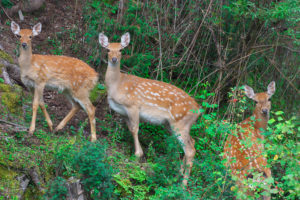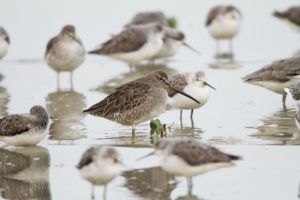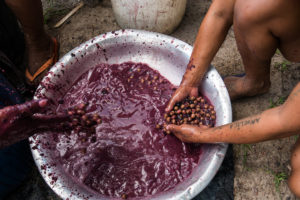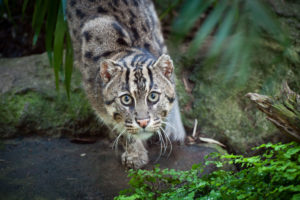Time changes things, and never more than during a pandemic.
On 10 February 2020, in the early days of Covid-19, the legislative work committee of China’s National People’s Congress Standing Committee announced it was adding a revision of the Wildlife Protection Law to its to-do list. Some days previously, research showing how animals such as pangolins can be hosts for coronaviruses had caused great public concern – and an unprecedented consensus on the importance of wildlife protection. Two weeks later, the Standing Committee announced a complete ban on the consumption of terrestrial wild animals as food, and a crackdown on illegal wildlife trade.
The sudden opportunity to change the long-standing approach in Chinese legislation which views wildlife as a “resource” encouraged academics and organisations working on wild animal conservation in China to speak out, putting forward suggestions for the revision in the hope of resolving what they saw as entrenched problems with the law. A 2016 revision of the law had also given rise to such hopes, which were ultimately disappointed.
In October 2020, a first draft of the new revision was published for public consultation. Though it did not do away with the use of wild animals as resources, conservationists saw some significant changes which could help to protect wildlife and ecosystems in China and abroad. But almost two years later, in early September 2022, a second draft of the revision emerged, with a consultation period running up to 1 October. The new draft reverses several significant changes made in the first draft, to the disappointment of hopeful conservationists, who are describing it as “a big step backwards”.
Health concerns removed
The most eye-catching change in the first draft was the addition of “guarding against public health risks” in the article setting out the overall purpose of the legislation. This reflected both public concerns around wildlife-borne diseases, and also a steadily forming scientific consensus that factors including the wildlife trade and habitat loss bring humans and wild animals into closer contact and increase the risk of new diseases emerging. The first draft banned the use of terrestrial wild animals as food – consolidating the Standing Committee ban put in place in February 2020 – and strengthened rules around the captive breeding, hunting, transportation and use of terrestrial wild animals categorised as having ecological, scientific and social value (the so-called “three-haves” animals) and wildlife subject to local protections.
But guarding against public health risks was removed from the legislative purposes in the new draft, and “guarding against risks” was also removed from the “principles of protection” in Article 4.
Those were not mere semantic changes. They are accompanied by specific relaxations in regulations.
Captive breeding to become easier
Much scepticism from conservationists around the new draft has focused on eased regulation around captive breeding of the three-haves species. The current Wildlife Protection Law only requires people breeding wild animals under special national protections (the highest level of protection under the law) to obtain a permit (in Article 25). But one local forestry police officer told China Dialogue that in practice, local authorities also require breeders of three-haves animals to obtain a permit. The first draft would have made that official: Article 26 required permits for captive breeding of wild animals under special national protection, three-haves animals, and wild animals under special local protection. But the new draft rolls that back, with permits only required for breeding wild animals under special national protection. For the three-haves species, breeders need only register with local authorities under the new draft. Under Article 51, failure to do so would incur a fine of only 500 to 2,000 yuan (70 to 280 US dollars).
An extremely worrying reduction in regulation and law enforcement in an industry that has a history of whitewashingPei Su, founder and CEO of the non-profit ACTAsia
This change is being seen as an open invitation to the captive breeding of wild animals. Conservation group Let the Birds Fly wrote in a public WeChat post that a new list of three-have animals, published for consultation by the National Forestry and Grassland Administration (NFGA) in 2021, includes 1,800 species, an increase of 680. The new registration system would mean minimal sanctions for anyone breeding these species illegally and would throw open the doors to commercial farming.
In an article on the issue, the Shanshui Conservation Centre argued that removing the permitting requirement for three-have animals would encourage poaching of those animals from the wild, as they could be laundered through breeding operations, making law enforcement harder. The centre said that while these species are not strictly protected animals, they underpin their ecosystems. Swapping permits for a registration system means abandoning new “conservation-first” thinking for an older, profit-oriented approach.
Pei Su, founder and CEO of the non-profit ACTAsia, described the change as “an extremely worrying reduction in regulation and law enforcement in an industry that has a history of whitewashing”. In an email to China Dialogue, Pei said that “such lax requirements could lead to a large increase in the number of wild animals being bred in captivity, and an increase in breeding establishments with low animal welfare standards.“ This could heighten the “risk of zoonotic disease causing future pandemics,” Pei added.
The resurgence of ‘resource thinking’
The changes are even more worrying when considered in the context of policy changes since the 2020 ban on use of terrestrial wild animals as food.
First, there was the expansion of the captive breeding whitelists. Although the 2020 ban on use as food prohibited the consumption of all terrestrial wild animals – including captive-bred members of those species – a loophole was left for animals included on a list of “livestock and poultry genetic resources”. In May 2020, the Ministry of Agriculture and Rural Affairs published this list, which alongside 12 “traditional livestock and poultry” listed 16 “special livestock and poultry species”, including the sika deer, red deer, Arctic fox and mink. Inclusion on this list means the animal can be bred, traded and consumed for food or its fur or skin.
Then, in April this year, the Supreme People’s Court and Supreme People’s Procuratorate published a legal interpretation which in effect decriminalised breeding of wild animals in certain contexts. This was criticised as offering a route for poachers to launder their hauls and creating huge new challenges for law enforcement.
In May, the NFGA solicited opinions on a labelling system for the trade of protected wildlife and wildlife products, and a first batch of animals it would apply to. Animals in that first batch could be traded and utilised, once labelling is in place. It includes 19 animals under special national protection and 15 species which are not native to China, many of which are classed as endangered or critically endangered in the wild on the International Union for Conservation of Nature’s Red List. International conservation NGOs warned that legalising the use of these animals could encourage their capture from the wild and so threaten wild populations.
Replacing a permitting system with an easier registration alternative for three-have animals is bound to result in more captive breeding of the species in question, allowing a problem that has long hampered China’s conservation efforts to become even more entrenched.
It is worth bearing in mind that yet more animals could be added to the list of livestock and poultry genetic resources. The 2020 first draft of the revision reflected the ban on use of wild animals as food in Article 29, saying that terrestrial wild animals which had been domesticated and bred for commercial use could be added to that list, where established captive breeding techniques and disease control methods were in place. The more recent draft repeats much of that language, but removes (in Article 29) the requirement for the Ministry of Agriculture to act as gatekeeper for the list and refers only to a general “list”, rather than a specific document. It is not yet clear if this means a number of different lists might emerge, being managed by authorities at different levels of government. But either way, this sets the stage for more wild animals to become classed as “livestock” and “poultry” and bred commercially.
Captive breeding and invasive species
The captive breeding of non-native species in China, whether for consumption as food or as pets, also complicates efforts to control invasive species. Recently, the dramatic search in Henan for two freed alligator gar – a large carnivorous fish native to the Americas – involving draining of a local lake, sparked heated discussion on invasive species and regulating the release of alien animals into the wild. Experts say the alligator gar was most likely been introduced into China via the pet trade. The case led to calls in August for the revision of the wildlife law to crack down on the release of non-native species into the wild.
Perhaps in response, Article 27 of the new draft requires breeders to prevent the escape of animals into the wild. In Article 41 – which in the existing law governs such releases – new language gives the NFGA and the Ministry of Agriculture responsibility for specific measures (for terrestrial and aquatic species respectively), indicating a dedicated set of rules will be produced. But escapes and deliberate releases are easy to hide and can have unpredictable outcomes. It would be much easier to limit the practice of captive breeding than to ensure all captive breeding operations are properly run. These changes highlight tensions between relaxing rules on captive breeding and efforts to control invasive species. The approach taken by the drafters of the new revision at the end rather than source of the problem indicates they are sticking to a resource-oriented approach.
In another article by Let the Birds Fly, the group pointed out that while Article 31 of the new draft bans the use of all terrestrial wild animals for food, it does not clarify if that this includes those bred in captivity. In comparison, the ban put in place in February 2020 explicitly included animals bred in captivity. What makes that lack of clarity worrying, the group’s article says, is that a late-2020 revision of the Criminal Code (Article 341) is clear that the hunting, purchase, transportation or sale of wild animals for food use is illegal only if those animals lived in the wild.
So, are captive bred wild animals still classed as wild animals? This has long been an issue in China’s conservation policy and practice. Even the Supreme People’s Court has had different opinions at different times, and the Wildlife Protection Law has not made things clearer.
International wildlife conservation organisations have also noted that unlike the current Wildlife Protection Law and the first draft of the revision, Article 37 in the new draft no longer clearly stipulates that species whose trade is prohibited or restricted by international conventions which China has joined shall, after approval from central wildlife authorities, be managed as species under special national protection. Instead, it ambiguously states that these species shall be “managed according to the relevant stipulations of this law”. Debbie Banks, campaign leader for tigers and wildlife crime at international environmental NGO the Environmental Investigation Agency (EIA) said: “The language for such species is ambiguous in the level of protection that would be afforded to them, and we are urging the government to ensure all non-native CITES listed species be treated as species under special [national] protection.”
When will all wild animals be protected?
This all comes to down to the fact that the current Wildlife Protection Law does not define what a wild animal is, only giving a scope of protection: rare and endangered terrestrial and aquatic wild animals (ie those with special national or local protection) and three-haves animals. This remained the case in both the 2020 and more recent draft revisions.
When the revision process kicked off in early 2020, a joint recommendation from the Shanshui Conservation Centre and nine other groups said that a definition of wild animals should be added to Article 1. Their suggestion: “Non-domesticated animals living in either natural or manmade settings.”
That would have covered captive-bred individuals of wild species, as well as wild animals not subject to any specific protections – such as the wild boar, Chinese zokor, large-billed crow and carrion crow, which are set to be kicked out of the three-have list. All wild animals have an important role to play in their ecosystems, and the risk of disease transmission if not limited to those which are rare and protected. So, while the new three-haves list was out for public consultation last year, some conservationists called for its abolition – rather than protect some animals, they said, protect entire ecosystems.
When the National People’s Congress Standing Committee revises a law, the process usually goes through three drafts – meaning there is most likely one more yet to come. How much time is left is unclear, but it may yet be possible to turn things around.








